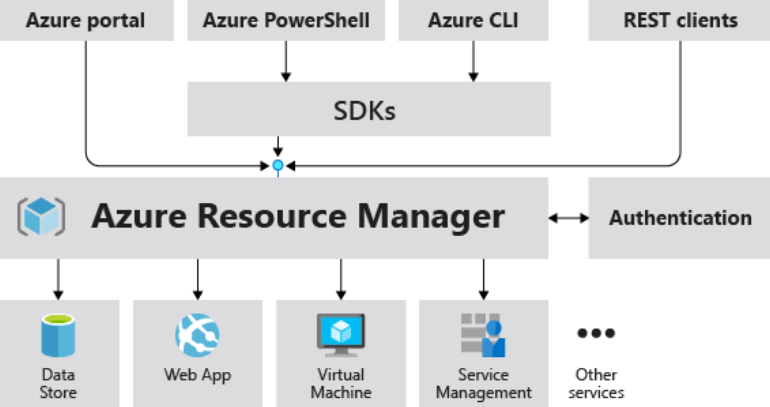Understanding Azure Resources, Instances, ARM, and Resource Groups
 Alla Yasheela
Alla Yasheela
Azure is a powerful cloud platform, and when you start using it, you’ll come across terms like resources, instances, ARM, and resource groups. Let’s break these down in simple language.
1. Azure Resources
What They Are: In Azure, a "resource" is anything you create or use within the platform, such as virtual machines, storage accounts, databases, or networks. These resources are the building blocks of your cloud environment.
Example: Think of Azure resources like individual appliances in your home—each one has a specific purpose, like a fridge for storing food or a washing machine for cleaning clothes.
2. How Instances Are Created
- Creating Instances: When you need to use a service in Azure, you create an "instance" of that resource. For example, if you need a virtual machine (VM), you create an instance of a VM. Azure then sets up and allocates the necessary computing power, storage, and network configurations for that instance.
3. Azure Resource Manager (ARM)
What It Is: ARM, or Azure Resource Manager, is the underlying system that manages all your Azure resources. It handles the deployment, updates, and management of these resources, making sure everything works together smoothly.
Why It Matters: ARM simplifies how you manage your resources by providing a consistent and unified way to work with them. Whether you’re deploying a single VM or a complex multi-tier application, ARM ensures everything is set up correctly.
4. Resource Groups
What They Are: When you create resources in Azure, It is (mandatory) to place them in a resource group. This grouping makes it easier to manage, monitor, and organize your resources.
Why They’re Mandatory: Resource groups are mandatory because they provide a way to manage resources collectively. For example, you can apply the same settings, permissions, or policies to all resources in a group, and when it’s time to delete the project, you can remove all related resources at once by deleting the resource group.
Tip: Best Way to Add Multiple Resources for Easy Tracking
When you’re working with multiple resources in Azure, the best way to keep track of them is by using tags. Tags are like labels you can attach to resources or resource groups to categorize them by project, environment (like "Development" or "Production"), or department. This makes it easy to filter and track resources across your entire Azure environment, especially when you have a large number of resources to manage.
Happy Learning :)
Subscribe to my newsletter
Read articles from Alla Yasheela directly inside your inbox. Subscribe to the newsletter, and don't miss out.
Written by

Alla Yasheela
Alla Yasheela
I'm Yasheela, an undergraduate with a deep interest in DevOps, and cloud technologies. Currently working on exciting projects on all things DevOps. I’m passionate about simplifying complex concepts and sharing practical insights. Through my Hashnode blog, I document my learning journey, from building scalable applications to mastering cloud services, with the goal of empowering others to grow their tech skills. Let's Learn Together !!